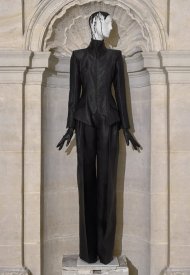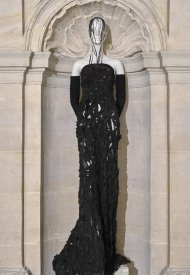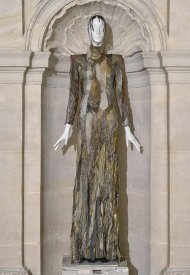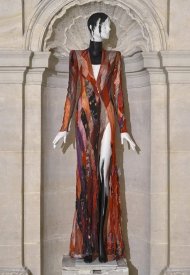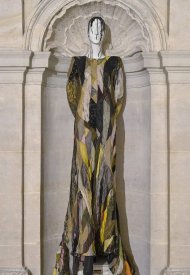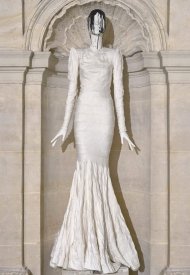An exploration of black, light and shine: Belgian designer Olivier Theyskens’ new collection takes center stage at Paris Fashion Week
With their fluid and elongated forms, Aloof mannequins by Bonaveri accompany and enhance the designer’s Spring Summer 2023 collection, indulging the sinuous dresses and purity of lines

Paris | Vision, transformation and new approaches to color. Appearing in sinuous poses are the 26 silhouettes signed Olivier Theyskens, presented in the setting of the Hôtel le Lièvre de la Grange during Paris Fashion Week, the final part of the Belgian designer’s triptych of collections (Spring Summer 2022, Fall Winter 2022, Spring Summer 2023).

Entirely handmade in his studio, and centered on the exploration of brillance and black, in this third collection the designer pursues his technical savoir-faire by being guided by a new selection of materials and unprecedented colors. Bonaveri’s mannequins accompany the collection’s textures and lines with Aloof figures, enhancing and indulging the clothes and the designer’s search for new, fluid and structured forms.
Olivier Theyskens’ Spring Summer 2023 collection exudes an architectural allure and is enveloped in an aura of transcendence: compact volumes meet a renewed sensuality in dresses sewn with a hand-executed patchworking technique, imbued with new and unusual properties of drape and fall.

The opening sequence of monochromatic tailored silhouettes with broad shoulders paints an imposing, androgynous character in leather, silk and velvet. Fabrics thus become a new material, like the paintings of French artist Pierre Soulages, capable, with each layer of paint, of transforming a sculpture.
The juxtaposition of the color black and light, expressed by the silhouettes, has always been part of the Belgian designer’s imagination and is the counterpart of the sensual “égérie” that inhabits his most feminine and sinuous dresses.

Among the garments, a long ultra-black coat, made with an application of scraps of leather discarded and reassembled in an accumulation of tulle becomes emblematic of a pure composition, a sublime transformation of the raw material. A handcrafted bodysuit, with the ribcage embroidered in black glass droplets, echoes the anatomical bodysuits of Theyskens’ debuts; the silhouette contains a chiaroscuro contrast, a photographic effect of light and shadow, while the glass droplets act as a silver jelly rolling off the body, as if they were grains of sand.
Breaking the monochromatic phase is a regal gown with a medieval flavor in a warm camaïeu of colors, which opens to a series of patchwork dresses inspired by a palette of colors such as ochre, brown, bronze, red, gold, and yellow, with touches of purple and emerald.
Earth tones collide with light lace, dark devoré velvet and silk muslin. By sculpting and cutting materials on the bias, they remain malleable and acquire new elastic properties, as seen in the dress composed of a mosaic of shimmering sequins that becomes a modern version of a mystical Byzantine icon. Small shades of metal give way to long-sleeved patchwork dresses in silver, bronze, and gold lamé, paired with mustard-colored velvet. A group of lace and silk dresses, cut on the bias, are constructed with a single seam that wraps sensually around the body.
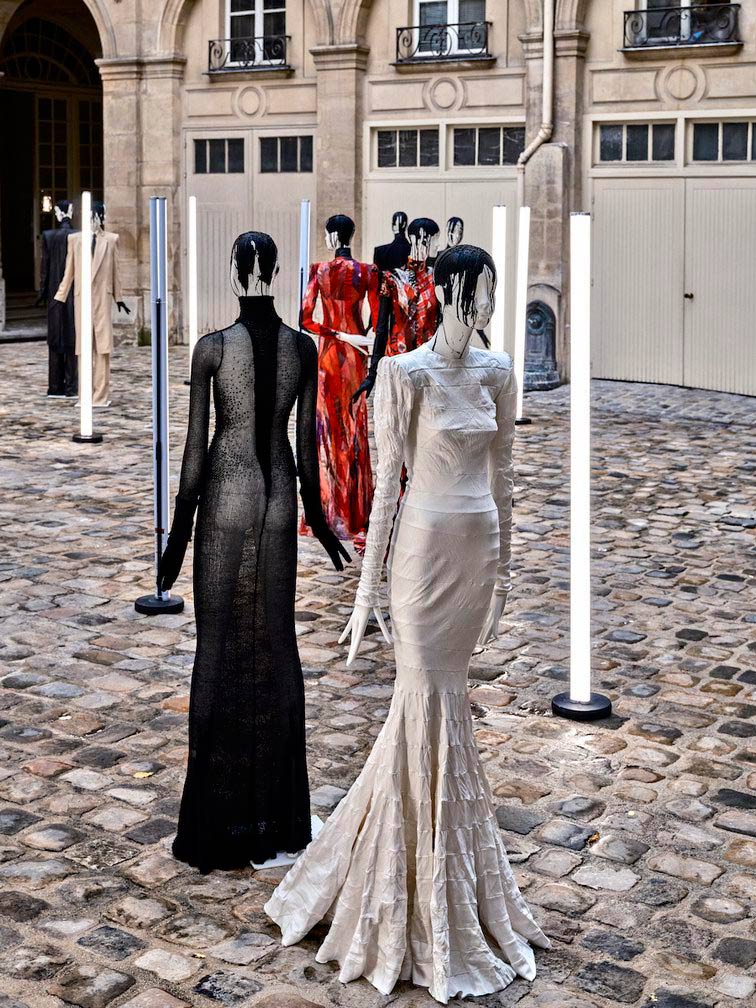
Aloof: Bonaveri’s mannequins with elongated, fluid forms
The Aloof collection is inspired by the archival collections of the Schläppi series from the 1960s. It reinterprets and interprets those figures characterized by elongated limbs and fingers, exaggerated poses at the limits of proportion, and a pronounced slope of the neck. The result is an original vision and mannequins in which angled curves and predominantly straight lines are softened by the femininity of the poses. The elegance of the attitudes recalls the atmospheres of the 1950s ateliers and the aesthetics that stylists, editors, and photographers crafted into iconic shots interpreting that era.
The desire was to create a collection capable of choral interaction, without there being the pre-eminence of individuals over the total. Hence the sense of theatricality of the models, both when employed alone and in the more numerous constructions, in which the figures seem to mirror each other.
This search for harmony led to the creation of a mannequin capable of holding the stage in the window of a boutique as well as inside a department store: eclectic and versatile. Aloof was created in collaboration with Emma Davidge as a natural evolution of the Schlappi series. The collection consists of eight female figures.
photo: Olivier Theyskens, Parigi Fashion Week © Claessens & Deschamps – Olivier Theyskens
P.Rew.: Memo Monti







